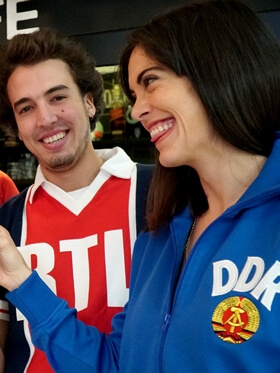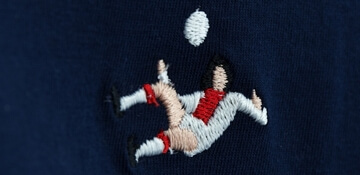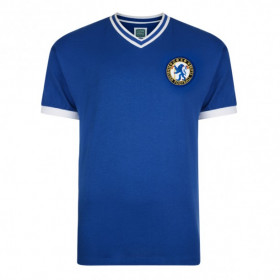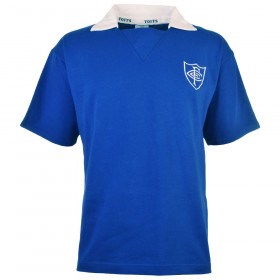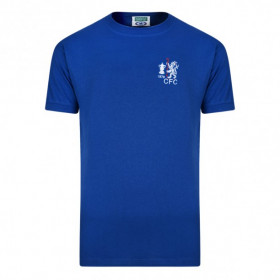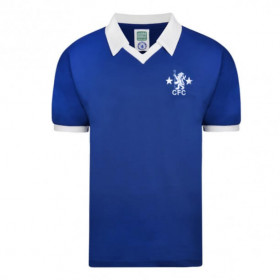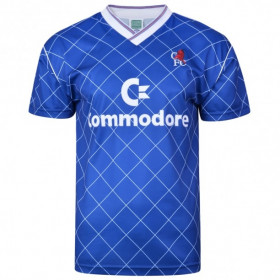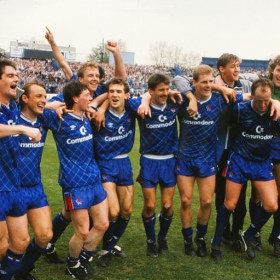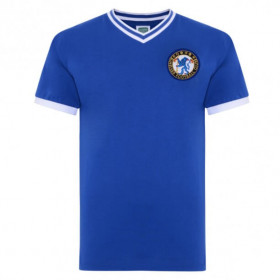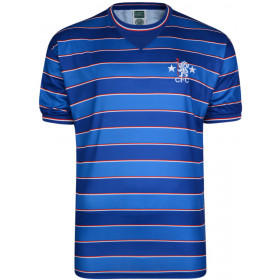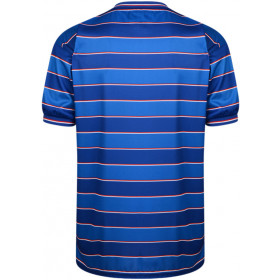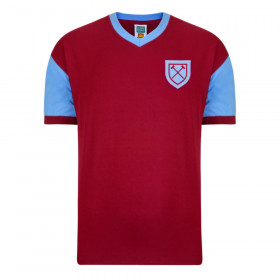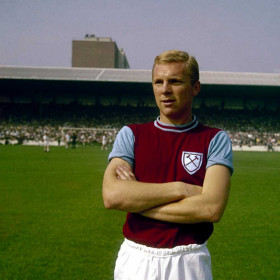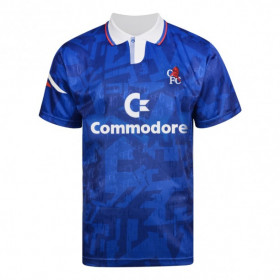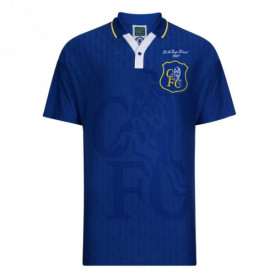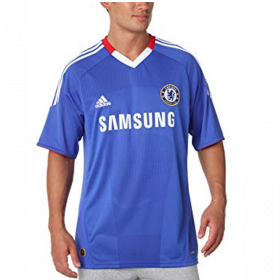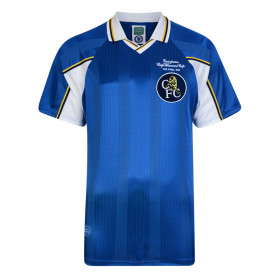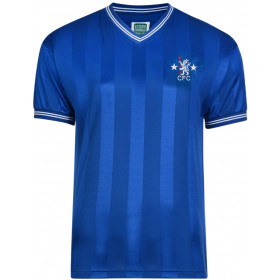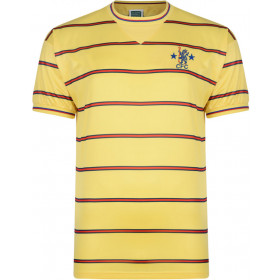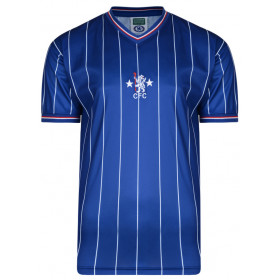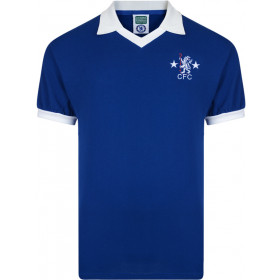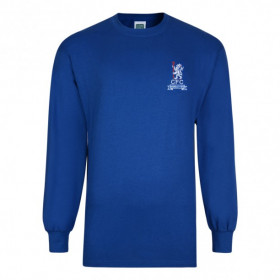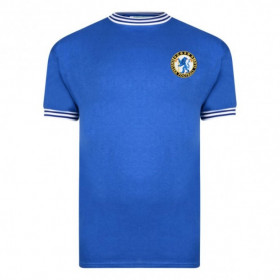Chelsea FC Retro Shirts

-
Chelsea 1960 Retro Shirt
£36.91 -
Chelsea FC Retro Shirt 1955
£55.39 -
Chelsea Retro Shirt 1983-84
£41.53 -
Chelsea 1992 Retro Shirt
£41.53 -
Chelsea 1996/97 Retro Shirt
£41.53 -
Chelsea 1997/98 Retro Shirt
£41.53 -
Chelsea retro shirt 1986
£41.53 -
Chelsea Retro Shirt 1970
£36.91
On this site we present you our Retro Shirts of the Chelsea Football Club; a historic club of London and the english football. All our official Chelsea Jerseys are representing special moments of the club history of Chelsea FC. With these jackets and shirts we want to revive diverse legends of the blues. Beside others we have the following classic shirts in our portfolio:
• Classic Chelsea Retro Footballshirt of 1970, the campaign of the first win of the Fa Cup in the club history. With players like Osman and Houseman the team managed to beat the, back then, big club Leeds United, coached by Don Revie and with legends like Billy Bremmer and Peter Lorimer in their team.
• Chelsea FC Retro Football Shirt of the campaign 1983-84; with this shirt they got promoted to the first League of english football. An Icon of a shirt with navy blue and sky blue stripes.
• Classic Chelsea FC Shirt of the season 1996-97, in which the club found partially to old glory, with the second win of the FA Cup in 1997 after 27 years. This team of the Blues consisted of remarkable players like Roberto di Matteo, who later won the champions league with the club in 2012 as a coach, Gianfranco Zola, Roberto Vialli and Mark Hughes. Chelsea faced with other topstars (Ruud Gullit) Middlesborough with Emerson and Ravanelli, and won 2:0.
The Chelsea Football Club is one of the biggest Clubs in the english Premier League. The Team has its roots in the district Fulham located in the east of London; there you can find as well the famous stadium Stamford Bridge nearby the Themse; in the year 1935, the times where you had standing stands in English football, it offered place for 82.905 visitors against the Liverpool FC. The Club biggest era of success since the late 90s began when the presidency of Ken Bates did end and he sold the club to the Russian Roman Abramovich in 2003.
We hope you enjoy our Chelsea FC shirt collection. The Blues are an international very popular club and to witness a game at the Stamford Bridge is a great football experience. If you wear a Chelsea FC jersey you can renew the memory of legends like, Zola, Vialli, Gullit, Frank Lampard or Didier Drogba. Football fashion for men with class.
A brief history of Chelsea
Foundation and early years
The birth of Chelsea FC
On the tenth of March 1905, several people met in an upstairs room of the Rising Sun Pub. One of these men was millionaire Gus Mears, who was wondering what do with the stadium, Stamford Bridge Athletic Stadium, that he was renovating just across from the pub that they were in. A deal with Fulham FC to rent the stadium had fallen through so the idea for Chelsea FC was born.
Situated in a prime area of London, Chelsea’s popularity rose incredibly quickly, and a match with Manchester United on Good Friday in 1906, only a year after the club was founded, was spectated by an unbelievable 67,000 people.
Rival fans like to mock Chelsea for only being a relevant club since Roman Abramovich poured money into the club in 2003 but Chelsea has had some traits since their origin.
Money and ambition are certainly such traits as it was founded by a millionaire with very grand plans.
The jerseys have had over the history of Chelsea FC significative changes. Its fashionable kits are also a mainstay in Chelsea’s history. The players wore Eton Blue, a much lighter shade than the iconic blue kit that was worn around 1906. Eton Blue was because the club president was Lord Cadogan who was involved with a lot of horse racing. Then it changed to royal blue. The designs have gone through important changes as well, sometimes plain blue others with lines either vertical or horizontal.
Around the decades of the 1930 the polo collar became iconic and the shirts were impressive with the royal blue. This jersey stayed until the end of the 50's.
The next decade, the sixties, the crest was introduced in the shirt and the lion was added. The rampant lion is the symbol of the first president, the Earl of Cadogan and was taken from the London Borough of Chelsea coat of arms.
Early years
Chelsea were the first ever club to hire ball boys because their goalkeeper Willie Foulke. He was larger than life in more than one way, weighing in at 23 stone or almost 150 kilograms.
Despite results not being particularly impressive, the club’s support most certainly was. This was its strength. Fans continuously showed up, and despite being at best a mediocre club for decades, Stamford Bridge had the highest average attendance in 1907-08, 1909-10, 1911-12, 1912-13, 1913-14 and 1919-20.
Their badge at the time was a logo of a famous Chelsea pensioner, with a long white beard and a few medals on his chest. Due to this, Chelsea’s nickname was the Pensioners. A Chelsea Pensioner is a resident of the Royal Hospital Chelsea, a retirement home for former members of the British army.
Chelsea’s football team got promoted to the First Division in 1907-1908 and relegated in 1910 to the Second Division and stayed between the First and Second Division for most of their fifty first years in existence, never managing to clinch the First Division title. Some of their highlights was getting to their first FA Cup final in 1915 where they lost to Sheffield United and finishing third in the First Division in 1920, as well as a couple of FA Cup semi-finals.
The Post War Era
Ted Drake
In the years after the war, Chelsea were more consistent as a mid-table team. Ted Drake, a former Arsenal and England centre-forward, was appointed manager of the club and he breathed new life into it.
One of the first things he did was replace the pensioner crest with the civic coat of arms of the London borough. This brought the iconic heraldic rampant lion onto the kit, because Drake thought that it was far more fitting of Chelsea football team as a symbol of his football team.
He also improved the youth set-up, putting much more emphasis on developing quality players rather than paying over the odds for star players that often underperformed. He redesigned the training system as well, trying to get the most out of his squad, and bought players from lower leagues that he was willing to form and develop.
This led Chelsea to their first ever First Division league title in 1954-55, great joy for the jubilant supporters of Chelsea, but unfortunately the success didn’t last. They were back to mid table in the following seasons and Ted Drake was sacked in 1961, but Chelsea football team owes him a debt of gratitude.
The sixties
In 1960, Chelsea became the first team to adorn their football shirt with the club crest, and the famous blue shirt was coupled with the lion to create a stylish shirt. The logo was deemed too complex for later shirts and they used a simpler crest, with just the letters CFC and the lion mounted on them.
Their nickname has become the Blues by this point since there was no longer a reason to associate Chelsea Football Club with the Pensioner.
The sixties were close to being successful for Chelsea, as they challenged for major honours, but they couldn’t quite convert it into silverware. They came closest in 1964-65, they won the League Cup and finished third in the First Division.
First FA Cup victory
In 1970, Chelsea managed to qualify for another FA Cup Final, this time against Leeds. It was an incredibly brutal match and was the second highest UK television audience for a sports broadcast ever, understandably behind the 1966 World Cup Final.
The game was almost a clash of culture: the ruthless, dirty, uncompromising Northerners against the more flamboyant Southerners. Neither side had ever won the FA Cup before either so there was a lot at stake for this final.
The first game was a real battle, which Leeds appeared to have clinched six minutes from full time when they scored to lead 2-1. Chelsea would not lie down however and scored the equaliser two minutes later. No more goals were scored in extra-time, so a final replay was set up. The teams took a joint lap of honour.
The replay had to be played at Old Trafford since the Wembley pitch was decimated by the first game. The match was incredibly rough although the referee only booked one player. When another referee reviewed the game in 1997, he declared that the game should have had six red cards and twenty yellow cards, showing just how much the game has changed in thirty years.
The teams were very well matched once again and the ninety minutes ended with a 1-1 draw. In extra time, a long throw was sent into the Leeds box and after some confusion, Webb sent the ball in much to Chelsea’s football team’s delight and they managed to hold onto their lead for the rest of extra-time.
The game was iconic, a perfect representation of football as it was before the modern era, with some frankly unbelievable acts of dirty play coupled with entertaining football and true passion and desire to win from every player on the pitch.
In 1971 they won the UEFA Cup Winners' Cup against Real Madrid, the first ever European competition and a hit due to the relevant opponent, with two goals by Peter Osgood and John Dempsey in the replay game.
A difficult period for the Chelsea team
After such a great start in the seventies, that decade and the eighties were not an easy time for Chelsea Football Club. They were relegated to the Second Division and almost fell to the Third Division in 1982. They were bought for just £1, a nominal fee by Ken Bates.
In 1980, their away shirt was a beautiful yellow with a green collar that very strongly resembled Brazil’s kit, while their football did not. They also introduced white stripes to their classic blue shirt a few times.
The Chelsea team regained First Division status in 1984 and had two top six finishes before a one year stay in the Second Division. Their fortunes were soon bound to change for the better however.
The Modern Era
Ruud Gullit
When the Premier League began in 1992, Chelsea were not established as a big club. In 1995, they signed the world class player Ruud Gullit to their ranks. At first he was played at sweeper with limited success, as he would play like a midfielder, distributing the ball to other defenders, who didn’t have his style of play at the time.
However, he quickly moved to midfield where he was far more effective, named runner up as Footballer of the Year to Eric Cantona. Gullit enjoyed playing at Chelsea more than anywhere else in his career: “Nice game, beautiful stadium, great crowd, I’m playing well. It was the only time I really had fun.”
The following year, he was named player-manager of the club. It is lovely to older Chelsea fans to remember that period. His first season in charge ended with an FA Cup victory as well a decent sixth placed finish in the Premier League.
However, he was sacked the next season with Chelsea sat in second place in the league and having made it to the quarter final in two competitions. The reason for this sacking is disputed to this day, with Ken Bates saying he “never liked him”.
The past twenty years: Chelsea’s most successful
In the past twenty years, Chelsea have successfully imposed themselves as a dominant force in English football. Even with Liverpool winning the 2020's Premier League, Chelsea have won more, winning five Premier Leagues since Abramovich bought the club.
Two of their most loyal servants have been Frank Lampard and John Terry. Both English, they played for the club for over a decade each and left everything on the pitch every time they played. Lampard is the highest scoring midfielder in the history of the Premier League and is fifth on the list of top scorers regardless of position.
Champions League victory
Chelsea Football Team’s finest victory is undoubtedly the 2012 Champions League final. To get there was already an unbelievable feat, as they somehow overcame Barcelona in the Semi final despite being massive underdogs and captain John Terry being sent off in the 37th minute.
Like in the Semis, Chelsea soaked up pressure from their opponents Bayern Munich and it was frankly unbelievable that they were drawing for so long. Muller put Bayern into the lead in the 83rd minute, and it looked to be all over for Chelsea as Bayern shored up their defence.
However, Didier Drogba cemented his place as a Chelsea legend by rising to a corner and powering it past Manuel Neuer to equalise five minutes after. Drogba then conceded a penalty in extra time but Petr Cech saved the penalty.
In the ensuing shoot-out, he was incredible, guessing the right direction of every single one of Bayern’s penalties, managing to save two of the five. He set up Drogba for the fifth kick, and the powerful striker sent Neuer the wrong way and buried it in the bottom left corner. Chelsea were Champions League Winners!
 Retrofootball
Retrofootball  Belgium
Belgium  France
France  Germany
Germany  Italy
Italy  Portugal
Portugal  Spain
Spain  Switzerland
Switzerland  United Kingdom
United Kingdom  other countries
other countries  Retrorugby
Retrorugby 
